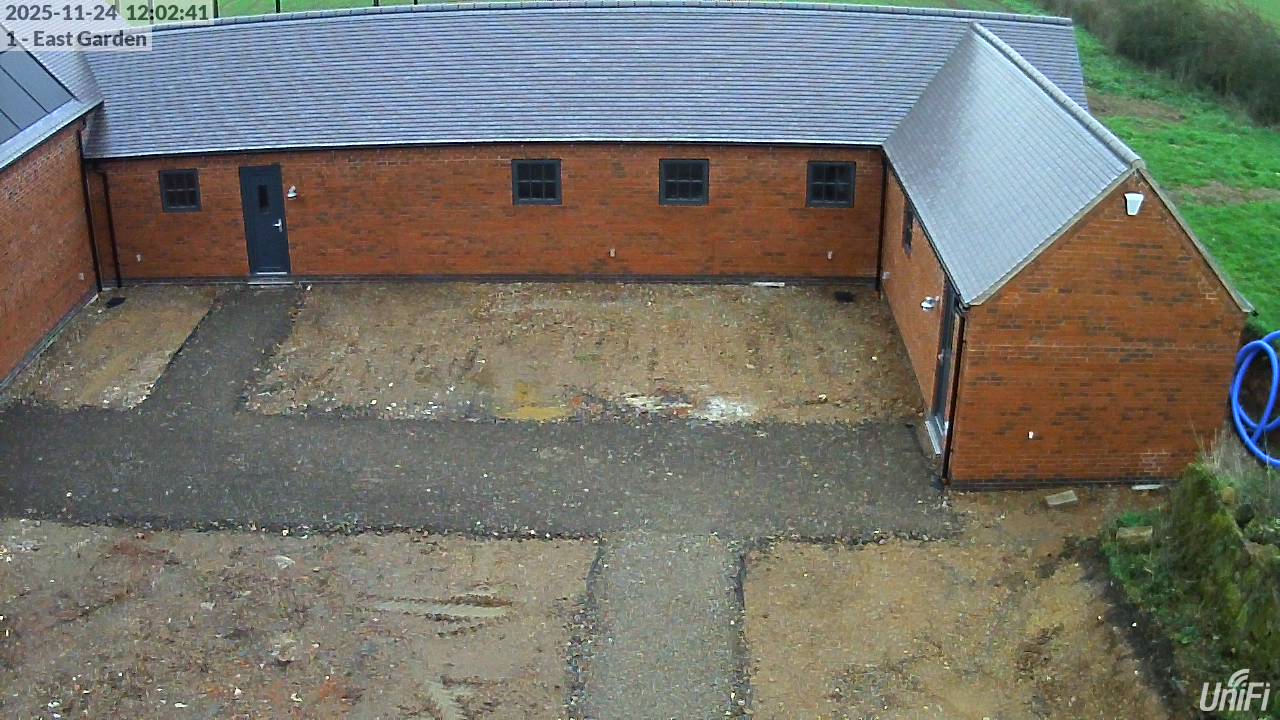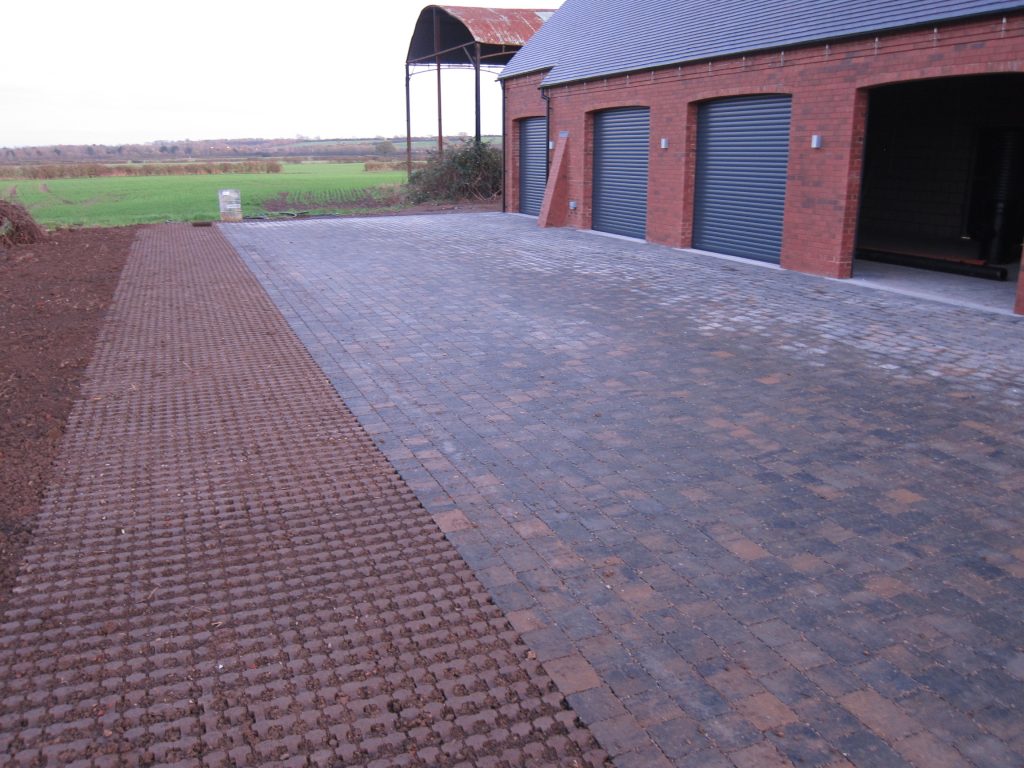
The long-awaited concrete headwall was finally delivered and quickly installed and connected up to the flow-control chamber ‘downstream’.

With the outfall from the pond taken care of, work can proceed to level off the base of the pond before moving on to install the inlet – though there will need to be a bit of tidying-up of the pond walls around the headwall at some point.
The small load of ready-mixed concrete that had been ordered to reinforce the foul drainage pipe under the access road to the block-paved parking area arrived as scheduled. Once that has set the stone foundation for that access road can be installed, making the parking area and the garages accessible.

I also completed a bit more preparation of the rainwater harvesting system by installing the submersible pump in the underground tank and routing its electrical cables and delivery hose to the pump controller in the adjacent building. A quick test of the pump, to flush through the delivery hose before connecting that to the inlet on the controller, showed it is working well. At their next visit, the plumbers should be able to get the rainwater supply working within the Outbuildings – since they’ve already fitted the meter, the expansion vessel and most of the other components required to enable that.


